Description
Re-Engineered Asphalt-Rubber: Product Development & Characterization
Vinay H. Nanjegowda, Krishna Prapoorna Biligiri
ABSTRACT. The major problem associated with the asphalt-rubber (AR) binder is the settling down of crumb rubber (CR) particles in the storage tank and hence necessitates usage immediately upon production. Additionally, the production of AR product comes at the cost of high capital investment in terms of specialized equipment. In the dry process, the rubber acting as aggregate absorbs the asphalt fractions resulting in swelling of rubber leaving behind less amount of asphalt to coat the aggregates, which may later affect the asphalt mixture performance. Also, in the dry process, due to physical nature of the granulated CR, the reaction time needs to be prolonged to achieve proper reaction between CR fractions and asphalt binder before placing the rubber-aggregate mix. Thus, the primary objective of this study was to develop a re-engineered AR, called modified-AR (MAR), whose design and product development included hot blending of CR, asphalt, and newly synthesized organo-montmorillonite (OMT). The MAR family products were produced under specific conditions followed by curing at room temperature resulting in composite materials that were finally pulverized. In summary, the material combinations, blending dosages, and sequences followed in this study resulted in six MAR products, which were characterized using vibrational spectroscopy and X-ray diffraction techniques. Based on the advanced material characterization tests, it was inferred that the type of blending sequence was not a major contributor while the blending dosage had a significant effect on the amorphous or crystalline nature of MAR products. This study emphasized the best use of CR emanating out of scrap tires in paving applications through incorporation of substantial proportion (30 and 62%) of CR as part of the MAR products when compared to the conventional AR binder that currently includes about 15-20% CR by weight of the base binder. Thus, MAR products constituted CR by about 2-3 times higher than the popular AR binder used successfully worldwide. It is envisioned that the innovative MAR family of products will become an alternative “green” AR product that will promote sustainability and environmental stewardship.
KEYWORDS: Modified asphalt-rubber, Organo-montmorillonite, vibrational spectroscopy, X-ray diffraction, Crystallinity.

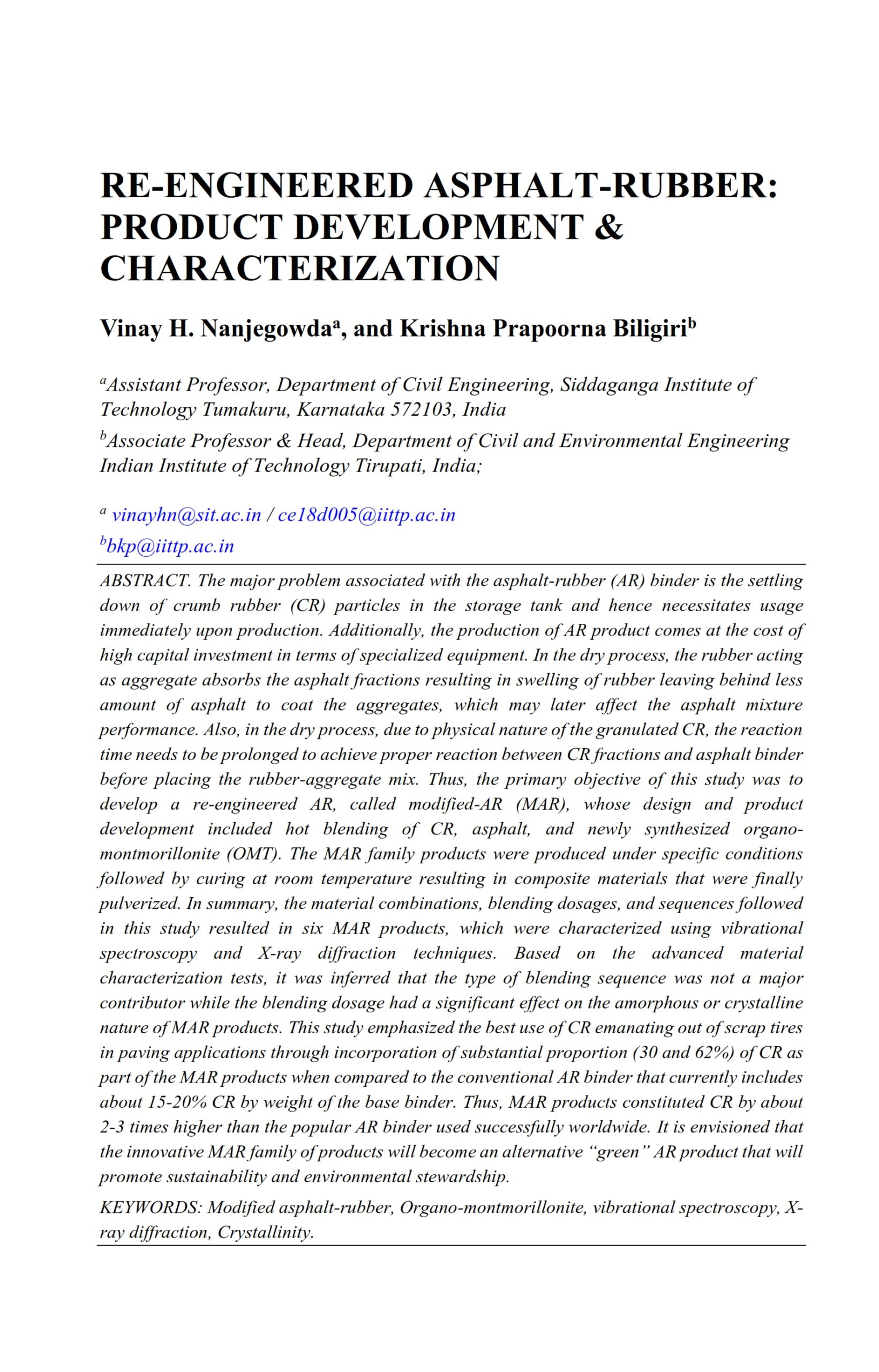
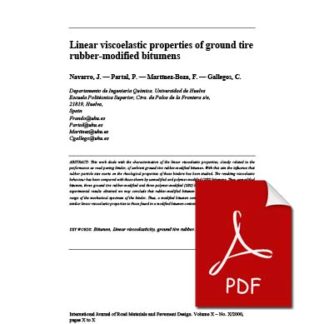
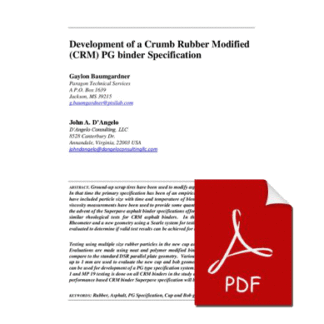
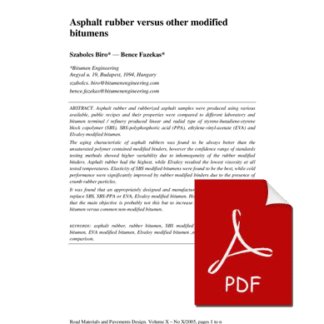


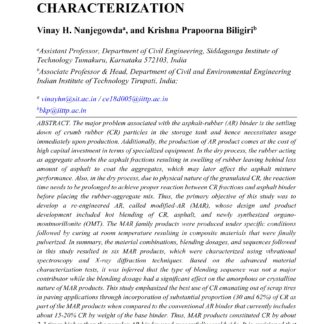
Reviews
There are no reviews yet.